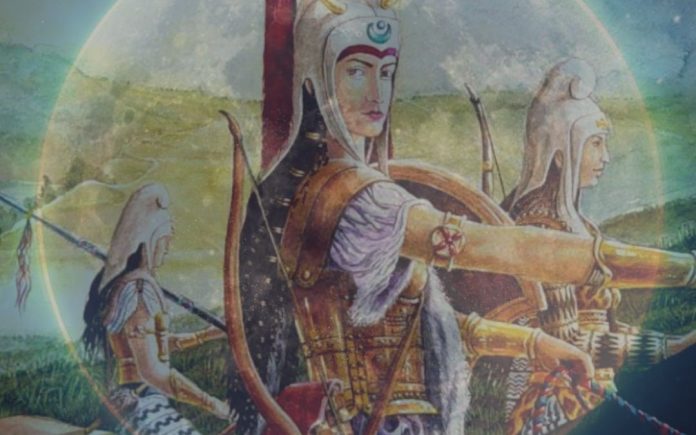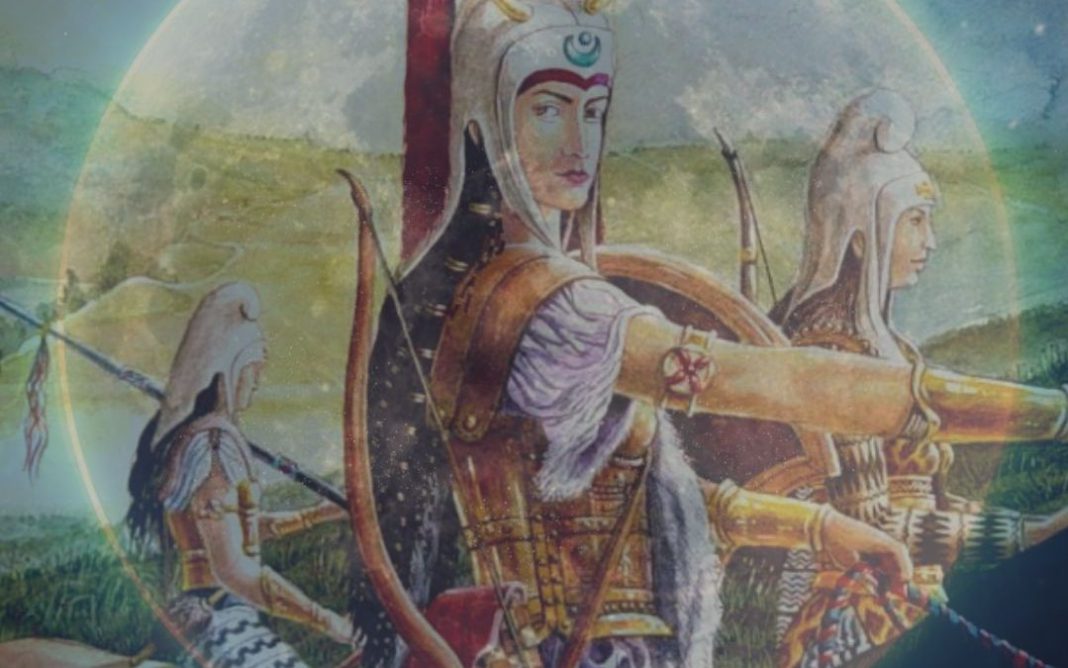Europa, a name that echoes through the annals of Greek mythology, is a captivating figure whose story has intrigued people for centuries. Her tale is one of beauty, adventure, and transformation, embodying themes that resonate deeply within the human experience. Europa’s significance in Greek mythology is profound, as she not only became the queen of Crete but also gave her name to the continent of Europe. This myth, rich in detail and drama, continues to capture the imagination of those who delve into ancient stories.
The story of Europa begins in Phoenicia, where she was the daughter of the Phoenician king. Renowned for her extraordinary beauty, Europa caught the eye of Zeus, the chief of the Greek gods. Zeus, captivated by her charm, devised a plan to approach her. Transforming himself into a magnificent white bull, he mingled with her father’s herd, drawing Europa’s attention. Enchanted by the bull’s gentle nature and striking appearance, Europa climbed onto its back. Seizing the moment, Zeus swiftly carried her across the sea to the island of Crete.
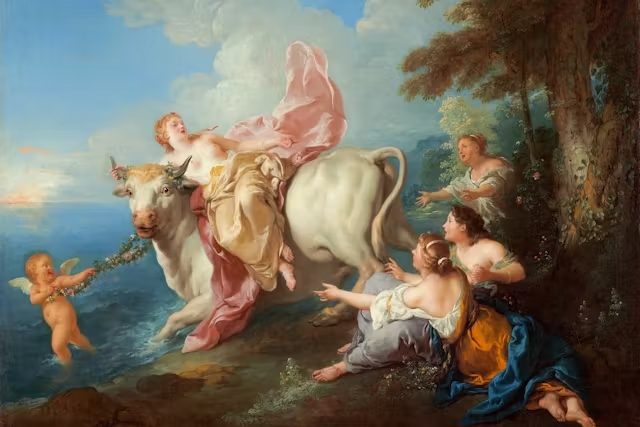
Europa’s abduction by Zeus is a pivotal event in Greek mythology, highlighting Zeus’s power and the lengths he would go to for love. Upon reaching Crete, Zeus revealed his true identity to Europa. They then had three sons: Minos, Rhadamanthys, and Sarpedon, who would later become significant figures in Greek myths. Europa’s life in Crete marked the beginning of her transformation from a mortal maiden to a queen, intertwining her fate with the island’s history.
The myth of Europa is not just a tale of love and abduction; it is a story that has left an indelible mark on Western culture. The very name “Europe” is derived from Europa, signifying her enduring legacy. Her story has been immortalized in ancient ceramics, coins, and literature, serving as a testament to her lasting impact. Today, Europa remains a symbol of beauty, adventure, and the interconnectedness of human history, captivating audiences with her timeless myth.
The Origins of Europa in Greek Mythology
Europa’s origins are deeply rooted in the rich tapestry of Greek mythology. She was born in Phoenicia, an ancient region located along the eastern coast of the Mediterranean Sea, in what is now modern-day Lebanon. Europa was the daughter of Agenor, the king of Tyre, and Telephassa. Her royal lineage and the prominence of her family set the stage for the extraordinary events that would shape her life and legacy.
From a young age, Europa was renowned for her exceptional beauty. Descriptions of her often highlight her radiant appearance, which seemed to surpass that of mere mortals. Her name, “Europa,” is said to mean “wide-eyed” or “broad-faced,” alluding to her striking and captivating features. It was this unparalleled beauty that caught the attention of Zeus, the chief of the Greek gods. Zeus, known for his many romantic escapades, was immediately smitten by Europa’s charm and grace.

Zeus’s infatuation with Europa led him to devise a clever plan to win her affection. He transformed himself into a majestic white bull, a creature that symbolized strength and purity. One day, while Europa was gathering flowers with her companions by the seashore, the magnificent bull appeared. Drawn to its gentle demeanor and stunning appearance, Europa approached the bull and, eventually, climbed onto its back.
This seemingly innocent act set the stage for one of the most famous myths in Greek mythology. Zeus, still in the form of the bull, took off across the sea, carrying Europa away from her homeland. The journey led them to the island of Crete, where Zeus revealed his true identity. In Crete, Europa would become a queen and bear Zeus three sons, who would go on to be significant figures in Greek myths.
Europa’s story, from her origins in Phoenicia to her abduction by Zeus, highlights the themes of beauty, transformation, and divine intervention that are prevalent in Greek mythology. Her mythological journey not only underscores her importance in ancient tales but also cements her legacy as a pivotal figure in the mythic traditions of Greece. The enduring appeal of Europa’s story continues to captivate and inspire, making her a timeless icon in the world of mythology.
The Abduction of Europa by Zeus
The tale of Europa’s abduction by Zeus is one of the most dramatic and captivating stories in Greek mythology. It begins with Europa, a beautiful Phoenician princess, spending her days in the meadows near the shore with her companions. Europa’s striking beauty had not gone unnoticed by the gods, and it was Zeus, the chief of the Greek gods, who became utterly enamored with her.
Zeus, known for his many transformations to pursue his loves, devised a cunning plan to approach Europa without alarming her. He transformed himself into a magnificent white bull. This bull was not an ordinary creature; it was splendid, with a shining coat and gentle demeanor, exuding an aura of divinity. One day, while Europa and her companions were gathering flowers, the white bull appeared, immediately capturing their attention.
Intrigued by the bull’s beauty and gentleness, Europa approached it cautiously. The bull lay down at her feet, inviting her to climb onto its back. Feeling safe and charmed by the bull’s calm nature, Europa did so. This moment marked the beginning of her extraordinary journey. As soon as she was seated, the bull, with Europa on its back, sprang up and began to move swiftly towards the sea.
Zeus, still in the guise of the white bull, carried Europa across the waters with great speed. The sea journey was both thrilling and terrifying for Europa, as she clung to the bull, realizing she was being taken far from her homeland. They traveled across the Mediterranean, eventually reaching the island of Crete.
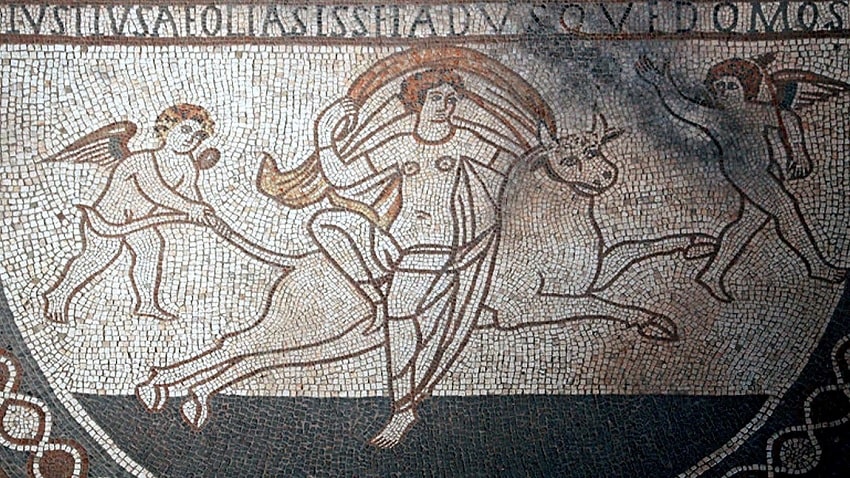
Upon arriving in Crete, Zeus revealed his true identity to Europa. He explained his deep affection for her and promised her a life of honor and respect. Europa, though initially shocked and disoriented by the turn of events, accepted her new fate. She became the queen of Crete and bore Zeus three sons: Minos, Rhadamanthys, and Sarpedon. These sons would grow to be notable figures in their own right within Greek mythology.
The abduction of Europa by Zeus is more than just a tale of a god’s desire; it signifies the profound impact of divine intervention in human lives. This myth highlights Zeus’s power and the lengths to which he would go to fulfill his desires. Europa’s journey from a Phoenician princess to the queen of Crete is a story of transformation, adventure, and the intertwining of mortal and divine realms. This myth, rich with drama and emotion, continues to be a cornerstone of Greek mythology, illustrating the enduring allure of Europa’s story.
Europa’s Journey to Crete and Her New Life
Europa’s journey to Crete marked a significant turning point in her life and in Greek mythology. After being abducted by Zeus, who had transformed into a majestic white bull, Europa was carried across the sea to the island of Crete. The journey itself was both thrilling and frightening for Europa. The bull’s powerful strides through the waves were swift and relentless, leaving Europa clinging tightly to its back as they moved farther from her homeland of Phoenicia.
Upon reaching the shores of Crete, Zeus revealed his true identity to Europa. He transformed back into his godly form and expressed his deep affection for her. Zeus promised Europa a life of honor and protection, assuring her that she would be treated with the utmost respect on the island. True to his word, Zeus arranged for Europa to be married to Asterius, the king of Crete.
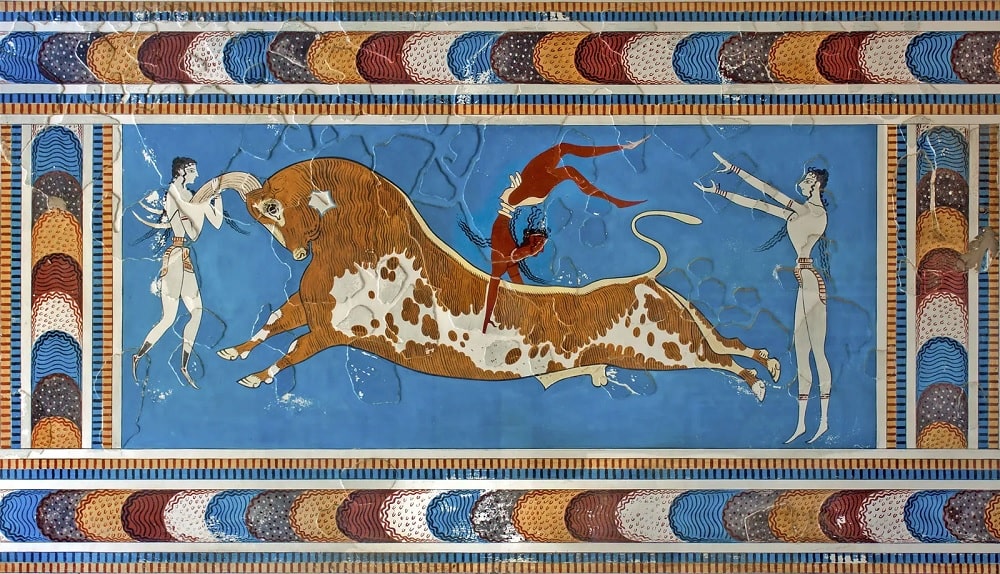
As the queen of Crete, Europa’s life took on new responsibilities and significance. She bore Zeus three sons: Minos, Rhadamanthys, and Sarpedon. Each of these sons would grow to become prominent figures in Greek mythology. Minos, in particular, became a legendary king, known for his wisdom and the establishment of the legal system on Crete. His name is often associated with the famous myth of the Minotaur and the labyrinth, which further cements Europa’s lasting influence on the island’s mythological heritage.
Crete itself holds a special place in Greek mythology. It is not only the island where Europa started her new life but also a significant cultural and historical center. The island was home to the Minoan civilization, one of the earliest advanced civilizations in Europe. The myths surrounding Crete, including those of the Minotaur and Daedalus, are deeply intertwined with Europa’s story, highlighting her importance in the region’s legendary past.
Europa’s role as queen helped shape the cultural and mythological landscape of Crete. Her descendants continued to play crucial roles in various myths, ensuring that her legacy endured through generations. The story of Europa’s abduction and subsequent life in Crete illustrates themes of transformation, adaptation, and the blending of divine and mortal worlds. Her journey from a Phoenician princess to a revered queen of Crete is a testament to her resilience and the profound impact she had on Greek mythology.
Europa’s journey and her new life in Crete remain a captivating narrative, highlighting the enduring power of myth to connect human experiences across time and geography. This story not only explains the origins of significant mythological figures but also emphasizes the island of Crete’s pivotal role in the ancient world.
Europa’s Legacy: Naming of a Continent
The legacy of Europa is immortalized not only in mythology but also in the very name of the continent of Europe. The story of how a Phoenician princess’s name came to define an entire continent is a testament to the enduring power of myths and their influence on history and culture.
Europa’s journey began in Phoenicia and took her to Crete, where she became a queen. Over time, her story spread across the ancient world, captivating the imagination of poets, artists, and scholars. The Greeks, known for their rich mythological traditions, played a crucial role in preserving and popularizing the tale of Europa. As her story became more widely known, her name began to be associated with lands beyond the Mediterranean.
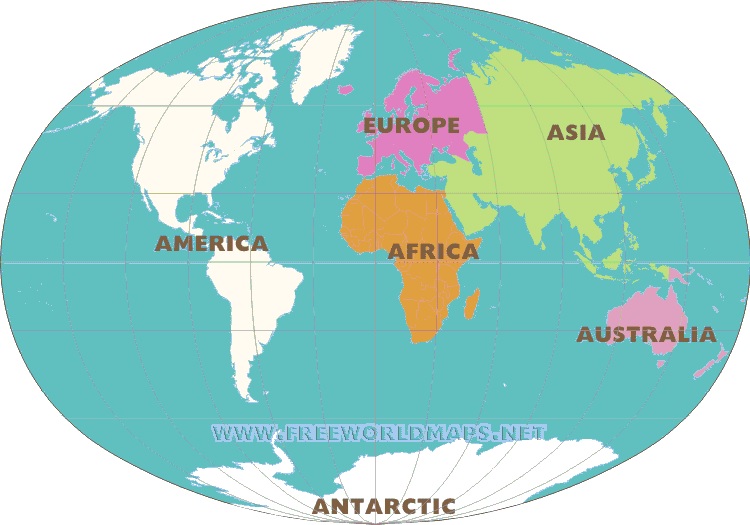
The precise reasons behind the naming of Europe after Europa are not entirely clear, but there are several theories. One popular theory suggests that the ancient Greeks used the name “Europa” to describe the lands to the north of their homeland, which were largely unknown and mysterious. Over time, this term evolved to encompass the entire continent.
The cultural significance of naming a continent after Europa is profound. It reflects the deep roots of Greek mythology in European identity and the influence of these ancient stories on the continent’s cultural and historical development. The myth of Europa symbolizes the blending of different cultures and the interconnectedness of the ancient world, as her story spans from Phoenicia to Crete and beyond.
Europa’s legacy is also evident in the many works of art, literature, and historical texts that have depicted her story over the centuries. From ancient Greek pottery and coins to Renaissance paintings and modern literature, the myth of Europa has been a source of inspiration and fascination. These artistic and literary representations have helped to keep her story alive and relevant throughout the ages.
Moreover, Europa’s story highlights themes of exploration, transformation, and cultural exchange, which are integral to the history of Europe itself. Just as Europa was taken from her homeland and established a new life in Crete, the continent of Europe has been shaped by countless migrations, exchanges, and transformations over millennia.
In conclusion, the naming of the continent of Europe after Europa underscores the lasting impact of her myth on European identity. It serves as a reminder of the powerful influence of mythology on history and culture, and how ancient stories continue to shape our understanding of the world. Europa’s legacy, immortalized in the name of a continent, is a testament to the enduring power of myth and its ability to connect the past with the present.
Depictions of Europa in Ancient Art
The myth of Europa has been a rich source of inspiration for artists since ancient times, and her story has been depicted in various forms of art, including ceramics, coins, and sculptures. These depictions offer valuable insights into how ancient cultures perceived the myth and its significance.
One of the earliest and most popular forms of artistic representation of Europa is found in ancient Greek ceramics. Vases, bowls, and other pottery items often featured intricate scenes from her myth. A common motif is the moment of her abduction by Zeus. These ceramics typically show Europa seated on the back of the majestic white bull, her expression a mix of fear and wonder as the bull carries her across the sea. The attention to detail in these scenes, such as the depiction of flowing garments and the waves of the sea, highlights the dramatic and emotional nature of the myth.
In addition to ceramics, coins from ancient Greece and later from the Roman Empire frequently depicted Europa. Coins served as a means to disseminate the myth widely, embedding it into everyday life. These coins usually featured Europa sitting on the bull or standing beside it, often holding a veil or garment that billows in the wind, symbolizing her journey. The use of Europa’s image on currency underscores her importance and the widespread recognition of her story throughout the ancient world.
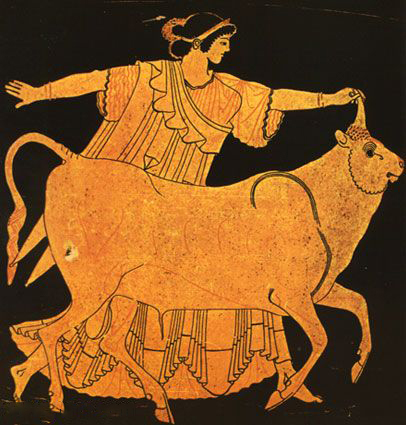
Sculptures and reliefs also played a significant role in depicting the myth of Europa. These three-dimensional works allowed for a more dynamic and expressive portrayal of the characters. One notable example is a marble relief from the Roman period, which vividly captures the moment Zeus, in bull form, carries Europa away. The sense of movement and the detailed expressions on the figures’ faces convey the myth’s drama and tension.
The variations in these depictions reflect different aspects of the myth and the cultural contexts in which they were created. For instance, some artworks emphasize the divine nature of Zeus’s transformation, portraying the bull with an almost ethereal quality. Others focus on Europa’s human emotions, highlighting her fear, curiosity, and eventual acceptance of her fate. These artistic interpretations reveal how the myth of Europa was understood and valued in various ancient societies.
Overall, the depictions of Europa in ancient art illustrate the enduring power and appeal of her story. They provide a window into how ancient civilizations viewed the interplay between gods and mortals, and how they used art to communicate complex narratives and cultural values. The widespread and varied representations of Europa underscore her significant role in Greek mythology and her lasting impact on artistic traditions. Through these artworks, the myth of Europa continues to captivate and inspire, bridging the gap between ancient and modern worlds.
The Enduring Legacy of Europa
The story of Europa is a timeless tale that has left a profound impact on both mythology and history. Beginning as a beautiful Phoenician princess, Europa’s extraordinary journey saw her being abducted by Zeus, who had transformed into a magnificent white bull. This dramatic event led her to the island of Crete, where she became queen and mother to three notable sons: Minos, Rhadamanthys, and Sarpedon. Her life and legacy are deeply intertwined with the rich tapestry of Greek mythology.
Europa’s name has transcended her mythological origins to become the namesake of the continent of Europe. This naming underscores her enduring significance and the influence of her story on Western culture. The myth of Europa reflects themes of transformation, adventure, and the divine interplay with mortal lives, all of which are central to Greek mythology. Her story has been a source of inspiration for countless works of art, literature, and historical texts, ensuring that her legacy continues to captivate and inspire generations.
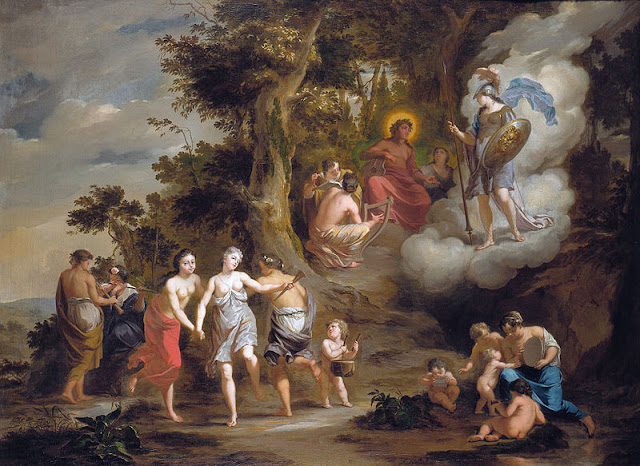
In ancient art, Europa’s abduction by Zeus has been vividly depicted on ceramics, coins, and sculptures. These artworks not only illustrate the key moments of her myth but also provide insights into how ancient societies viewed the interplay between gods and humans. The varied depictions of Europa in art highlight her significance and the widespread recognition of her story throughout the ancient world.
The enduring legacy of Europa is a testament to the power of myth and its ability to connect the past with the present. Her story invites us to explore the rich and fascinating world of Greek mythology, where gods and mortals intertwine in tales of love, adventure, and transformation. Legends such as The Amazons, fierce warrior women who challenged conventional gender roles, are among those that add depth to the mythological landscape.By delving into these ancient stories, we gain a deeper understanding of the cultural and historical contexts that shaped them.
For readers interested in learning more about Greek mythology and the captivating tales it encompasses, there is a wealth of information and resources available. From ancient texts to modern interpretations, the stories of gods, heroes, and mythical creatures offer endless opportunities for exploration and discovery.
We invite you to comment on this article, share your thoughts, and explore related content on our site. Your engagement helps keep these timeless stories alive and relevant for future generations. The myth of Europa, with its enduring legacy and captivating narrative, continues to inspire and intrigue, reminding us of the timeless power of storytelling.
Frequently Asked Questions (FAQs)
1. Who was Europa in Greek mythology?
Europa was a beautiful Phoenician princess renowned for her extraordinary beauty. Her story is intertwined with Zeus, the king of the Greek gods, who abducted her and took her to Crete.
2. How did Europa’s name become associated with the continent?
The exact reason remains unclear, but theories suggest the ancient Greeks used “Europa” to describe the unknown lands north of their homeland. Over time, the term came to encompass the entire continent.
3. What are some famous works of art depicting Europa?
Europa’s abduction by Zeus has been a popular theme in ancient art. Examples include Greek pottery depicting her on the bull’s back, Roman coins featuring her image, and marble reliefs showcasing the dramatic scene.
4. What are the main themes explored in the myth of Europa?
The myth of Europa explores themes of transformation, adventure, beauty, divine intervention in human lives, and the interconnectedness of the mortal and divine realms.
5. Where can I learn more about Greek mythology?
There’s a wealth of resources available! Explore ancient texts, modern interpretations, or online content to delve deeper into the captivating world of Greek gods, heroes, and mythical creatures.
Use of Our Content
⚠️ Content on “Mystery Uncover” is protected under US and International Copyright Laws.
You are free to reuse, republish, and share our content by giving credit to the source as Mystery Uncover with a link to the original material on mysteryuncover.com.



